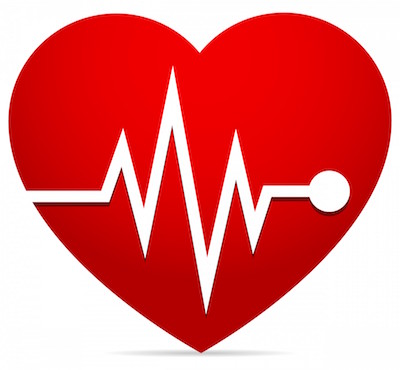 It’s February, and you know what that means. Love is in the air! But what’s equally as important as that chocolate heart your loved one will give you on Valentine’s Day is your very own blood-pumping heart!
It’s February, and you know what that means. Love is in the air! But what’s equally as important as that chocolate heart your loved one will give you on Valentine’s Day is your very own blood-pumping heart!
February is American Heart Month, which is a much-needed reminder that we can all improve our heart health. According to the American Heart Association, the number of people diagnosed with cardiovascular disease is at an all time high and keeps rising. Heart disease currently leads as the number one killer, and stats project the number of heart failure cases to increase by the millions in the next several years. By 2030, more than 8 million people will suffer from heart failure.
With these numbers, it’s the perfect time to take the health of your heart into your own hands. Here are some preventative tips to add to your lifestyle to decrease your risk of heart disease and keep your heart happy and healthy:
Refocus your efforts to eat a healthy, balanced diet
One of the causes of heart complications stems from an unbalanced, unhealthy diet. Foods high in sodium lead to high blood pressure, which ultimately accounts for increased risk of cardiovascular disease. A diet driven by moderation and avoidance of sodium is key!
Avoiding sodium means more than simply not picking up the salt shaker from the dining room table. Studies show that most Americans consume an alarming amount of sodium from restaurants, prepackaged meals and processed foods. Sodium-high foods include breads and rolls, cured meats, pizza, soups and cheese.
Balance your diet by replacing these foods with those high in fiber and protein: fruits and vegetables, skinless poultry and fish, nuts, whole grains and low-fat dairy products!
Exercise, exercise, exercise
This reminder is nothing new — implementing a daily exercise regimen significantly lowers your risk for developing heart disease. The American Heart Association recommends breaking a sweat for at least 30 minutes a day, five times a week. Try aerobic exercises like walking, running, swimming or biking. And, exercising with friends or committing yourself to workout with a group will motivate you to stick with your goals. Simply being active reaps significant benefits in the long run.
Maintain a healthy blood pressure
Blood pressure measures the strain your arteries experience while carrying blood away from your heart. As you get older, it’s normal for your blood pressure to rise; however, it’s important to keep it as low as possible.
High blood pressure forces cholesterol to create a buildup of plaque inside the artery walls, causing the blood vessels to work harder to pump blood through your body. Over time, the strain becomes too large of a burden for the arteries to bear, and your heart doesn’t receive enough of the oxygen it so desperately needs. As a result, a heart attack occurs. Schedule regular appointments with your physician to keep a steady eye on your blood pressure. There are also a number of apps that you can download on your Android or iOS that assist with recording and accessing important health information at your fingertips.
See – it’s easy!
Lowering your risk of a heart attack stems directly from eating healthy and exercising. Daily activity helps maintain your weight, while eating healthy ensures a nutrient-rich diet. Both regimens lower blood pressure and contribute to the lasting health of your heart!